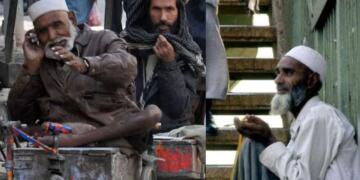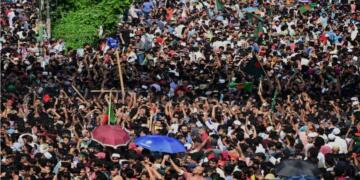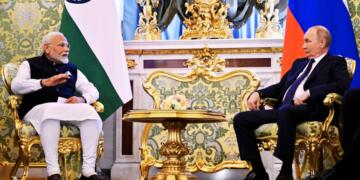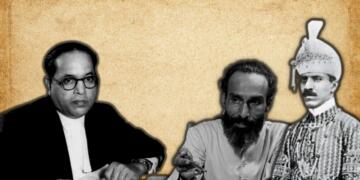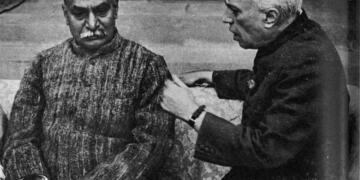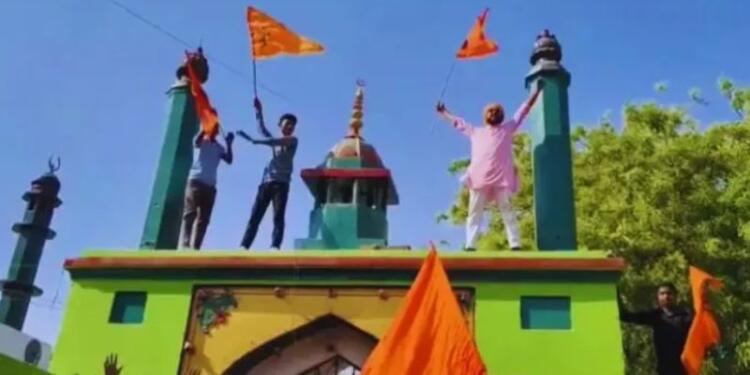The Leftists and Islamists cabal has a penchant for glorifying Islamic invaders who rampaged the Indian subcontinent – the erstwhile undivided India – indulged in mass genocides of the Hindu community and raped countless women, apart from plundering the Golden sparrow. In the same vein, the Islamo-leftist cabal is currently busy eulogising Islamist marauder and nephew of Mahmud of Ghaznavi who demolished the revered Somnath Mandir in Gujarat, Syed Salar Masud aka Ghazi Miyan.
Currently, the details in the Prayagraj incident are murkier but the Islamo-leftist cabal is resorting to communal fear mongering and peddling the damp squib of ‘Muslim victimhood’. For this, they have been sharing a viral video in which some activists of an outfit linked with Maharaja Suheldev can be seen climbing atop a ‘dargah’ and waving saffron flags.
Ignoring historical facts pertaining to who Salar Masud Ghazi was, the cabal is painting the incident as an assault on religious places of the Muslims, with many mischievously labeling the dargah as a Mosque, a place of worship.
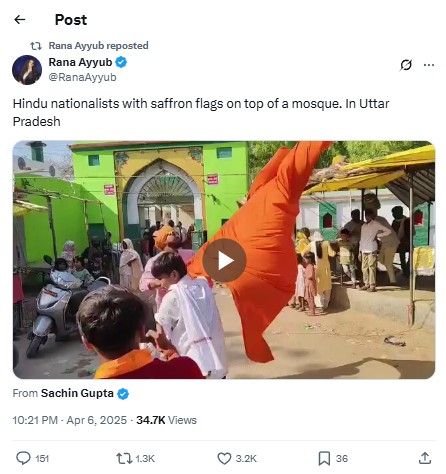
The fact is, yesterday’s incident didn’t take place in vacuum, rather this so-called dargah being attributed to Islamic tyrant Salar Ghazi has been embroiled in controversy for a long time now.
As per Amarujala report, the recent controversy dates back to 23rd March when Police asked the Roza Mela Committee President Safdar Javed to lock it. Later, on 30 March, a day when a fair was to be held there, Police barricaded the ‘dargah’ and policemen remained deployed there and the Roza mela did not take place. Additionally, Javed admitted that Salar Ghazi’s original ‘dargah’ is situated in Baharaich.
As per TV9 Bharatvarsh Hindi, Police reportedly said that it was Samadi (resting place) of five Hindus earlier, while omitting any mention of it being the dargah of Salar Ghazi.
थाना बहरिया क्षेत्रान्तर्गत सिकन्दरा स्थित मजार पर कुछ युवकों द्वारा धार्मिक झण्डा फहराने पर कृत कार्यवाही के सम्बन्ध में आज दिनांक-06.04.2025 को पुलिस उपायुक्त गंगानगर द्वारा दी गयी बाईट- pic.twitter.com/2vxzJq3aFh
— DCP GANGANAGAR PRAYAGRAJ (@DCPGNagarPRJ) April 6, 2025
Despite disputes of it being a Samadi of Hindus or a dargah of Salar Ghazi, locals have long been demanding that it should be razed to ground. For locals, as well as for the activists of the Maharaja Suheldev linked outfit, there should be no place for structure that eulogise Islamist tyrants who killed countless Hindus against whom Maharaja Suheldev fought valiantly.
Nonetheless, the foundation for the Islamo-leftist narrative should be put to test in the realm of history, that is, understanding who Syed Salar Masud Ghazi was. The historical facts on Salar Ghazi should be enough to expose why those supporting the Islamist tyrants and peddling the boogie of Muslim victimhood should be the ones who needs to be called out for exaggerating minor law and order issue as an “assault on Muslim community’s religious structure”.
Syed Salar Masud Ghazi
Ghazi Syed Salar Masud, the nephew of the barbaric invader Mahmud of Ghazni, was no saint. While Islamists revere him as a “martyr” who died fighting “kafirs,” the truth is far darker. He was an Islamic fanatic. Under the patronage of his uncle, he took part in widespread massacres and forced conversions of Hindus.
In the 11th century, he ravaged northern India, targeting temples, mutts, and sacred Hindu sites—among them the holy Suraj Kund in Bahraich. To spread Islamic dominance, he spearheaded invasions, mass executions, and the destruction of religious institutions.
His birth itself is shrouded in mystery. There is no consensus among historians, but according to many researches and documents, Salar Masood was born in the 11th century, around 1014 AD, in Ajmer, Rajasthan. His father Abu Syed Salar Sahu Ghazi alias ‘Budhe Baba’ came to India from Afghanistan and settled in Ajmer Sharif. It is said that after Masud’s birth, his mother returned to Afghanistan, while Budhe Baba settled with his son in Satrikh, Barabanki, where he died and was buried here.
His uncle Mahmud Ghaznavi symbolizes the most brutal beginning of Islamic attacks in the history of India. Ghaznavi attacked India 17 times from 1001 AD to 1026 AD. The most horrific attack among these was on the Somnath temple in Gujarat in 1026, where he looted immense wealth and destroyed the temple.
Salar Masud Ghazi was not only his nephew but also the commander of military operations. In the historical book – The Life and Times of Sultan Mahmud of Ghazna (1930, Cambridge University Press), historian Mohammad Nazim has stated that Salar Masud led from the front line in Ghaznavi’s biggest attack on Somnath. In this entire attack, hundreds of Hindus were killed, temples were demolished and people were forcibly converted to Islam.
Maharaja Suheldev vs Ghazi
It is clearly recorded in the book Anwar-e-Masoodhi by historian Maulana Mohammad Ali Masoodi that after attacking Somnath and its surrounding areas, Masud marched further towards North India. Around 1030 AD, he reached Bahraich in Uttar Pradesh, where he challenged the local kings and started attacking Hindu kingdoms. King Suheldev of Shravasti near Bahraich openly challenged Masud and refused to surrender. He formed a joint army with 21 kings from the surrounding area and fought a decisive battle against him.
In this battle, the Hindu army led by Maharaja Suheldev defeated Syed Salar Masud Ghazi. Masud was killed in this battle. His soldiers buried his body in Bahraich, where his so-called dargah remains today. Sultan Nasiruddin Mahmud of the Delhi Sultanate from 1246 to 1266 AD built a tomb on this grave. After this, the Sultans of Delhi started visiting there and then the common Muslims too. Gradually, the tradition of paying obeisance and celebrating Urs started there, and a religious invader was awarded the title of ‘Peer’ and ‘Ghazi’.
Not only this, even today fairs and Urs are organized in the name of that invader in many parts of India. Nauchandi fair of Meerut, Neja fair of Puranpur in Amroha, Urs of Sambhal and Thamla, all these are named after Masud. Pertinent to highlight here that the title of ‘Ghazi’ is given to the one who is killed fighting the ‘infidels’ for Islam. That is, Masud was given this title because he waged a religious war on the native Hindus of India and killed thousands of innocent people.
In the 13th century, African traveler Ibn Battuta has also mentioned this shrine of Bahraich in his travelogue. This makes it clear that terrorists like Syed Salar Masud have been glorified by some religious and political forces for centuries, which is an attempt to deny the historical truth of India. Today, when there is a demand in the country to remove the grave of an Islamist tyrant like Aurangzeb, at the same time, the tomb of Salar Masud Ghazi also needs to be seen in the historical perspective. A dargah in his name is not a religious place, but a memorial of the tyrant who had bloodied the soil of India.
According to Distorian Anna Suvorova who brazenly compared Salar Masud Ghazi to Lord Krishna and Lord Shri Ram, his dargah was built in place of a Sun temple.


